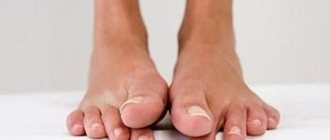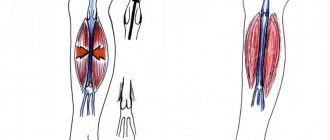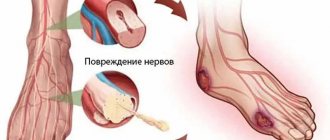Reading time: 6 min. 15 sec.
Cold hands and feet are a natural reaction of the body to hypothermia when a person walks outside in cold weather in thin shoes and without gloves. A decrease in the temperature of the extremities is also possible with insufficient physical activity. When we sit at a computer or desk for a long time, blood circulation is impaired, resulting in cold hands and feet.
If a person is constantly freezing, his fingers are always icy even in a warm room, he needs to consult a general practitioner. Cold hands can be a symptom of a serious illness. It is especially dangerous if constant chills are accompanied by numbness, tingling in various parts of the body, weight loss, tachycardia, and dizziness.
MedEx clinic doctors will determine the cause of cold hands and feet. We have modern diagnostic equipment to thoroughly examine patients.
Causes of cold hands and feet
Constantly cold extremities are one of the signs of vascular pathologies. The following diseases may be the cause of circulatory disorders:
- Diabetes. The pathology is characterized by fragility of small and large vessels, an increased risk of thrombosis;
- Raynaud's disease. Pathology provokes vascular neuroses - spasm of small arteries. A person simply cannot tolerate frost. When it's cold outside, blood circulation in the extremities decreases to a critical level;
- Obliterating endarteritis. The lumen of the vessels narrows, blood clots form, blood flow to the arms and legs becomes difficult;
- Vegetovascular dystonia (VSD syndrome). With this diagnosis, cold fingers and toes are often observed even in young people aged 20-25 years;
- Iron-deficiency anemia. Oxygen transport to body tissues is reduced. As a result, metabolic processes slow down and less heat is generated;
- Venous stagnation. One of the most dangerous conditions. My hands are constantly cold, pain occurs at night, and swelling appears in the morning. If venous congestion is not treated, the problem will develop into thrombosis and inflammation;
- Deviation of blood pressure from normal. Cold hands occur with both high and low blood pressure. Both conditions lead to impaired blood supply to the extremities.
There are also non-vascular reasons. For example, older people over 50 almost always have cold hands. This is a normal manifestation caused by the natural processes of aging, hormonal changes, and decreased immunity. Cold hands in adults occur with hypothyroidism, allergic reactions, heart failure, and damage to peripheral nerves. In heart pathologies, freezing extremities are accompanied by pale skin. Infection with parasites also leads to spasm of blood vessels and cooling of the hands and feet.
Diagnostics
The examination of a patient with complaints of chilly feet begins with a family doctor (therapist), who, if necessary, involves highly specialized specialists in the diagnostic search - vascular surgeons, neurologists, endocrinologists. During a physical examination, the color and temperature of the extremities are assessed and signs of venous stasis or ischemia are identified. For diagnostic purposes, the following instrumental and laboratory research methods are used:
- Doppler ultrasound of leg vessels.
Duplex scanning of the arteries and veins of the lower extremities shows the speed of blood flow, pathological reverse blood flow, visualizes blood clots and lipid plaques blocking the lumen of blood vessels. Features of microcirculation are assessed according to rheovasography and capillaroscopy. - Angiography.
The method is used to diagnose obliterating processes of the lower extremities that cause chilliness. Peripheral arteriography shows narrowing or blockage of the lumen of the arteries and helps assess the size and extent of plaques. Ascending phlebography of the legs is indicated for studying venous blood flow, the condition of the deep and superficial veins. - ECG.
To confirm arterial hypotension, arrhythmia and other cardiac pathologies, a cardiogram is recorded at rest and with stress tests. To clarify the diagnosis, an orthostatic test and echocardiography are recommended. To assess daily fluctuations in blood pressure, Holter monitoring is performed. - Neurological diagnostics.
A standard examination includes testing of superficial and deep sensation, reflexes, muscle tone and strength. For a qualitative assessment of neuromuscular transmission, electroneuromyography is prescribed. In case of osteochondrosis, the results of an MRI or CT scan of the spine are informative for a neurologist. - Laboratory techniques.
Based on the results of a clinical blood test, anemia and its probable causes are diagnosed. Biochemical research is aimed at identifying nutritional deficiency. When cold feet are of endocrine origin, an expanded hormonal profile is studied.
Consultation with a vascular surgeon
What are cold extremities?
Physiologically cold. The decrease in temperature occurs due to natural causes. When a person spends a long time in a cold room or on the street, his hands and feet begin to freeze. If you warm up, your limbs will gradually become warmer.
If an adult’s hands and feet remain cold even in hot weather, it is worth considering other causes of blood supply disturbances:
- sedentary lifestyle, staying in a position with legs tucked for a long time;
- recent frostbite of the hands and feet, after which normal blood circulation has not yet been restored;
- starvation, malnutrition;
- taking certain medications that cause vasoconstriction;
- disruption of the usual daily routine, for example, lack of sleep;
- smoking and drinking alcohol.
All of the above cases do not require treatment. It is enough for a person to restore his daily routine, adhere to the principles of proper nutrition and move more.
Pathologically cold. A decrease in the temperature of the extremities on a constant basis is a consequence of some disease. A person constantly has cold hands at normal temperatures and in hot weather. The condition does not go away for a long time. If you go to a warm room, drink hot tea, try to warm your hands, then nothing will work. In this case, you need to consult a doctor. The doctor will make a diagnosis and help you cope with the problem.
Treatment
Help before diagnosis
If chilliness occurs against the background of banal hypothermia, the person needs to be warmed up as soon as possible. For mild hypothermia, use warm drinks, baths, and heating pads. The temperature must be increased gradually. For superficial frostbite, warming bandages are applied to the legs. With moderate and severe hypothermia, the patient requires comprehensive medical care.
To correct vegetative-vascular dysfunction or physiological hypotension, non-drug measures are sufficient. Patients experiencing chilliness are advised to normalize their work and rest schedule, walk more in the fresh air, and begin dosed training in the gym. It is recommended to limit watching TV and surfing social networks. A balanced diet high in vitamins helps improve your well-being.
Conservative therapy
Medicines are selected taking into account the etiological factors of chilly feet. In cases of arterial circulation disorders, infusions of saline solutions and antiplatelet agents, which prevent the adhesion of red blood cells and increase blood fluidity, show a good effect. To prevent thrombosis, anticoagulants are included in therapy. Dilatation of peripheral vessels and improvement of blood flow is achieved by taking antispasmodics.
For obliterating atherosclerosis, which causes chilly legs, lipid-lowering drugs are effective, reducing cholesterol and LDL levels and preventing the appearance of new lipid plaques. For endarteritis, pathogenetic treatment includes anti-inflammatory drugs and corticosteroids, which neutralize pathological changes in the vascular wall.
In case of insufficient venous outflow, phlebotropic agents are used in combination with elastic compression. To influence trophic ulcerative defects, local effects in the form of creams or ointments are indicated. Patients with polyneuropathy are recommended to take B vitamins, which improve neuromuscular transmission. The therapeutic regimen is supplemented with neurotrophic drugs.
To eliminate chilliness associated with obliteration of the vessels of the legs, physiotherapy is used: electrophoresis with medicinal solutions, ozokerite applications, diadynamic currents. Hyperbaric oxygenation helps improve tissue oxygen supply. General strengthening balneological procedures are actively prescribed: pine, pearl or radon baths.
Expert recommendations
Doctors around the world tell patients that cold hands in hot weather cannot be ignored. In the presence of pathology, wasting time can lead to irreversible consequences. Let me give you an example of diabetic foot syndrome. This is a dangerous condition in which the main blood flow in the arteries of the lower extremities is significantly reduced. Cold feet are the first sign. Then, as a result of deterioration of tissue trophism, non-healing ulcers form and infection develops. The worst prognosis is limb necrosis. Complications can be prevented if treatment is started on time. This is the answer to the question of why run to the doctor when a person constantly has cold extremities.
Dzhgarkava Tea Gochaevna
Therapist-cardiologist Experience 5 years
The problem is in the blood vessels
The first question why your feet are cold that should be closed is checking the blood vessels. A common reason why women under thirty have cold feet is autonomic dysfunction. According to old classifications, this condition was called vegetative-vascular dystonia. The mechanism of its development is that the balance between the work of the sympathetic and parasympathetic nervous systems is lost. Therefore, there is a disruption in the blood supply to the organs and the body as a whole. If your feet are cold, what does it mean ? All due to the fact that adrenaline is released and the blood vessels spasm.
Parasitic infestation
A common reason why women's feet get very cold is worms. The thing is that during their life, worms produce a huge amount of toxins. In turn, toxins lead to vasospasm. People who constantly come into contact with animals, namely milkmaids, veterinarians and animal lovers, are especially prone to infection with worms.
reasons why feet are cold
Prevention
In order to eliminate such a manifestation as numbness of the legs, you must adhere to simple rules, which are as follows:
- Rejection of bad habits;
- Reducing salt intake;
- Active lifestyle;
- Proper, balanced nutrition;
- Providing the body with all the microelements and vitamins it needs;
- Avoiding high-heeled shoes or keeping them to a minimum;
- Sports activities;
- Attention to your health;
- Timely seeking professional help if certain symptoms occur.
MC CELT specialists give a positive prognosis for timely treatment of numbness in the legs. Trust your health to professionals!
Make an appointment through the application or by calling +7 +7 We work every day:
- Monday—Friday: 8.00—20.00
- Saturday: 8.00–18.00
- Sunday is a day off
The nearest metro and MCC stations to the clinic:
- Highway of Enthusiasts or Perovo
- Partisan
- Enthusiast Highway
Driving directions
Stages of acute ischemia
1. Sudden pain in the leg, coldness, reduction in walking distance. If the collateral vessels are good, ischemia may stop at this stage with the development of intermittent claudication or critical ischemia. Most often, this stage is observed with thrombosis of altered arteries, if their lumen was previously narrowed and collateral circulation developed. At this stage, the operation is carried out after the necessary additional examination and preparation. The color of the leg may be pale or take on a bluish tint (cyanosis). The result of surgical treatment is excellent. Recovery of leg function is most often complete.
2. The symptoms described above are accompanied by weakness in the leg, which gradually worsens to the point of paralysis. However, passive movements in the fingers and other joints are possible. Such phenomena are associated with the death of nerve endings and blockade of nerve impulse transmission along the nerves. This stage of ischemia is an absolute indication for emergency surgery, since independent restoration of blood flow is impossible, and delay in intervention will lead to gangrene. Timely surgery restores blood flow with minimal loss of limb function. Numbness of the foot and fingers remains, and swelling of the leg persists for a long time.
3. Muscle death begins, first there are foci of muscle necrosis, muscle pain, and dense swelling of the lower leg. Then comes numbness of the fingers, ankle joint, and knee joint (muscle contracture). The muscles die completely. If the muscles are partially lost after restoration of blood flow and a long postoperative period, the leg may be preserved, but walking will be difficult. In the case of muscle contracture, amputation is necessary, since restoration of blood flow leads to the death of a person from poisoning with decay products.
Clinical manifestations
In pathological conditions, numbness of the legs is a symptom that is always accompanied by a number of others. Depending on the etiology, they may be different, but the general picture is approximately as follows:
- Feeling of heaviness in the lower extremities;
- Gait disturbances;
- Inability to distinguish cold from hot;
- Fatigue, constant weakness and weakness;
- Tingling and goosebumps;
- Cramps and increased pain at night;
- Sudden and sharp appearance of pain in the chest and spine;
- Itching and burning of the skin, sometimes blueness;
- Severe headaches and dizziness.










